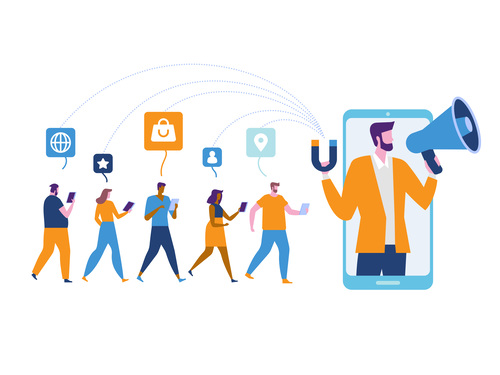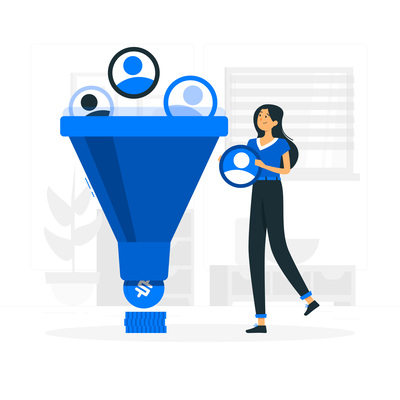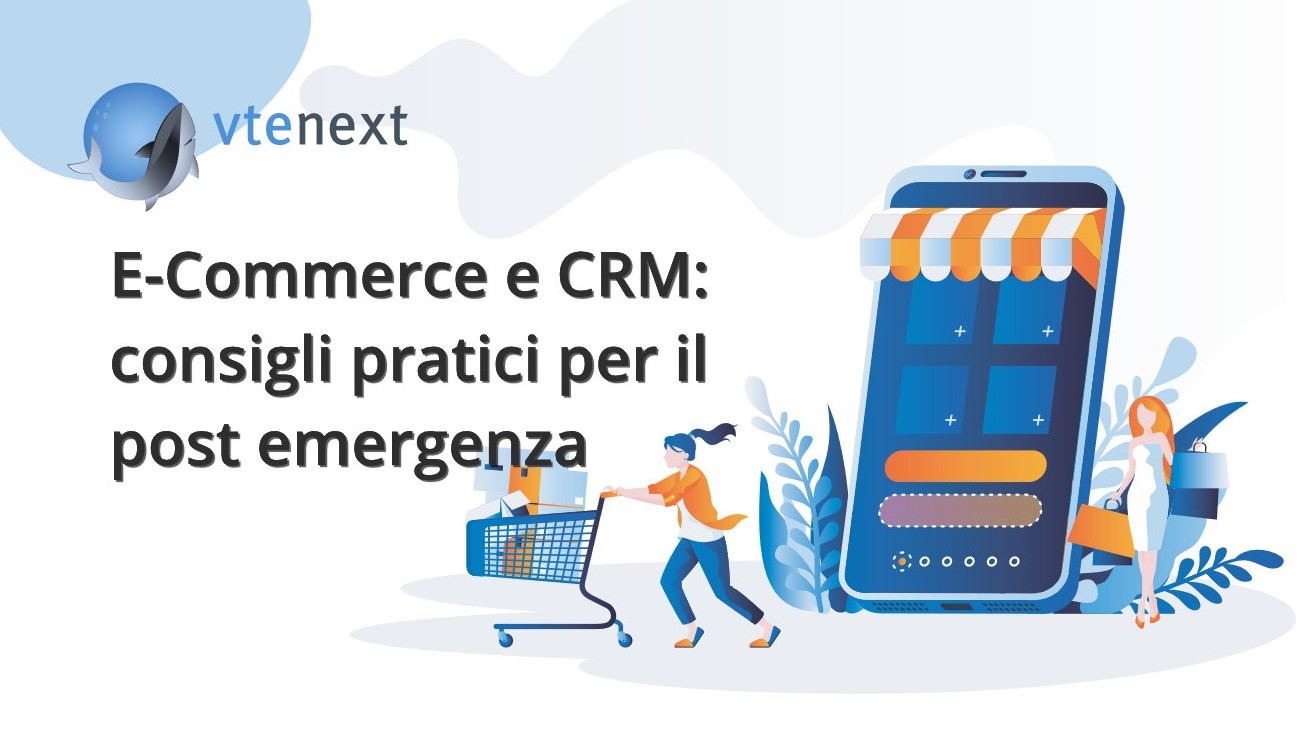E-Commerce and CRM: post-emergency practical advices
The coronavirus has changed our behaviours: not only those relatet to our social, work or school life, but mostly those related to our purchases. It was a real revolution: from large chains to small neighborhood shops, everything has moved to digital often in hybrid ways.
The data confirm the growth
The Netcomm Forum, that took place last May, confirmed that since the beginning of 2020 there are a total of 2 million new online consumers in Italy, of which 1.3 million used for the first time an e-commerce platform during the lockdown. In March 2020, 75% of grocery shoppers were in their first online shopping experience (Nielsen).
Even if at a macro level e-commerce is growing strongly, the situation changes if we focus on the revenue of the various companies: a research carried out by Criteo shows that “54% of the e-commerce companies interviewed saw their turnover drop due to the pandemic, while only 21% increased it. We are talking in particular of tourism-related companies that have left room for sectors hitherto considered marginal such as food, which has seen a three-digit growth.”
Again according to Netcomm, e-commerce will be the sector that will grow the most worldwide, with an expected increaseof up to 55% in 2020.
Acquired and potential customers: how to manage efficiently online sales
Companies that adopted an e-commerce platform but weren’t ready for the sales explosion now face a dilemma: how to manage acquired and potential customers?
In order to design an efficient sales process and build long lasting relations with the consumers it is not only necessary to give them a unique experience and a fast customer service, but even a rapid, targeted and personalized communication is essential.
All this is possible only through a deep knowledge of the customers.
It is therefore important to have a lean CRM system that allows a fast but effective management of sales and relationships. After all the name itself, Customer Relationship Management, focuses on the relationship with the end users of products or services.
In fact, a company should not make the mistake of focusing energies and activities only on the search for new prospects and leaving the existing one in caos.
Harvard Business School on the “The Economics of E-Loyalty” already confirmed years ago that a 5% increase in loyalty can lead to an increase in profits between 25% and 95%. In addition, a customer’s retention cost is 5 to 10 times lower than the cost of acquiring a new one.

Define the buyer personas to create a successful customer journey
Let’s take a step back. In order to know your customer it is important to have a full awareness of both your CRM platform and their Customer Journey.
The Customer Journey indicates the path and each point of contact that the consumer has with the company before, during and after the purchase.
Usually the “journey” is divided into the following phases:
- Awareness: it is the moment were the potential customer inquires and tries to find a solution to his problem. Begins to collect information through various channels.
- Consideration: the potential customer starts looking for the company that can solve his problem, evaluates the available options, compares the solutions on the market weighing their characteristics and advantages.
- Acquisition: the decision was made and the purchase took place. It is the phase in which the customer must be recognized as such and it is necessary to guarantee timely and quality assistance.
- Retention: this is one of the hardest steps and it is also where most companies fail. This is the moment in which customer satisfaction must be maintained by continuing to solve consumers’ problems and anticipating future obstacles and needs.
- Advocacy: if all phases are succesfull customers will become “fans” of the brand. Their influence on others’ purchasing decisions, through recommendations, could encourage further sales.
Before planning the Customer Journey, however, it is essential to have a clear understanding of our target audience: we have to build a photograph of our typical users, or rather create some “buyer personas“.
To identify them, it is not only necessary to carry out qualitative and quantitative analysis, like surveys and interviews, but also to use the historicity of the CRM data.
In this way, it will be possible to design targeted marketing strategies and campaigns not only for each profile but differentiated according to the phase of the Customer Journey in which it is located. This is undoubtedly an effective way not to waste resources and focus investments only where they really are needed.
Consideration, acquisition e retention: how to best optimize them with vtenext
CRM is the fundamental tool to be used for analysis and to implement any strategy.
The CRM + BPMN solution vtenext is designed with the aim of working with a customer centric logic, reducing the waste of time in the management of marketing, sales, assistance and increasing loyalty and internal performance.
Consideration
In the Leads module you can collect all the information regarding potential customers who are still in the consideration phase. Data can come from different channels:
- websites: with vtenext you can create forms that generate half-profiled lead directly in the module. The system notifies in real time the person in charge of incoming leads.
- registration for online and offline events: through a web form subscribers automatically become profiled leads.
- business e-mails: incoming emails at “generic” addresses (eg. info@, sales@, customers@, etc.) are automatically converted into a ticket and linked to the sender’s record
 . If the record is not present in the CRM a new one is created.
. If the record is not present in the CRM a new one is created. - personal emails: starting from the email is possible to link it to an existing record or to create a new one.
- contact lists from external sources and spreadsheets: massive import of lists in csv format or from database.
Acquisition
Product added to cart, payment method chosen and checkout made, what happens next?
Thanks to vtenext it is possible to keep track of all the purchased products for each user in order to:
- monitor customer trends by creating customized purchase reports divided by targe
- keep a history of the purchased products
- profile and segment customers with the use of advanced filters
Retention
In order not to be forgotten, especially in a moment like this one where purchases made by new customers are higher than expected, it is important to work on the retention. Thanks to vtenext it is possible to:
- perform cross and up selling activities: by working on historical data.
- activate targeted marketing campaigns: newsletter and telemarketing campaign on contacts and companies according to their previous purchases and interests.
- carry out follow up activities: a customer hasn’t bought in a while? By activating a dedicated process vtenext will send an alert to the person in charge or will automatically send an email to “cold” customers.
- provide punctual and quality customer service: as we wrote on one of our previous articles (https://www.vtenext.com/customer-service-e-smart-working/), provide a quality customer service is for sure a winning card to play in order to increase customer retention on our e-commerce site
The flow and continuous exchange of information between the two platforms is undoubtedly fundamental: vtenext is a SaaS software with an open source nature that allows the synchronization in complex e-commerce ecosystems thanks to the ease of integration with all the main platforms.
Try vtenext for free for 30 days at the following link.
In addittion visiting our forum you will gain access to useful resources that will help you on your journey such as online manual, forums and video courses.
